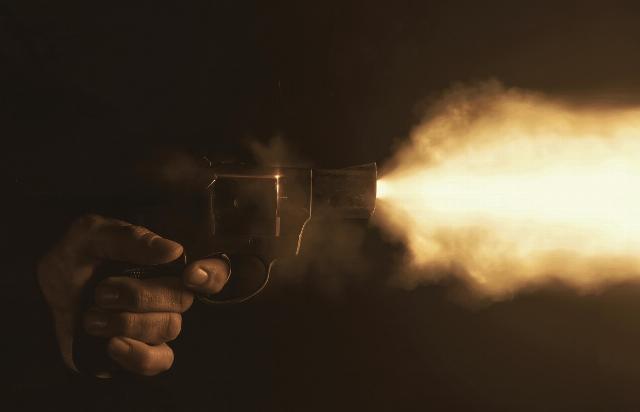
One of the most contentious legal and social issues in our country over the past 25 years has been gun rights. And as gun violence increases in many parts of the country, there’s natural pressure on lawmakers to enforce stricter gun laws.
However, many of these stand in stark contrast to constitutionally protected rights. And at the crux of it all is one major question: Do strict gun laws actually prevent gun violence?
The Constitutional Basis
The Second Amendment of the United States Constitution explicitly states the right to bear arms. This amendment is not just a legal provision but a recognition of the natural right to self-defense and personal liberty.
To put it mildly, stricter gun laws often clash with this fundamental right, imposing restrictions that can infringe upon freedoms that are guaranteed by the Constitution. The debate over gun control is not just a policy issue but a constitutional one, raising questions about the balance between public safety and individual rights. It’s also a major party issue, striking a pretty deep divide between the Left and the Right.
The Reality of Gun Violence and Laws
The assumption that stricter gun laws directly lead to a decrease in gun violence is not as straightforward as it seems. For example, California, known for having the most stringent gun regulations in the country, continues to struggle with high rates of gun violence.
“Even the state with some of the strictest gun laws can’t keep gun violence away from its borders,” reporter Julia Jacobo writes for ABC News. “California has some of the most stringent gun laws in the country — many of which were enacted in response to several of the violent mass shootings in recent years. But that hasn’t stopped a wave of mass shootings from plaguing the state.”
This paradox highlights a critical flaw in the argument for more restrictive gun laws: the idea that regulations alone can solve the complex issue of violence.
Criminals, by definition, do not adhere to laws. Therefore, implementing stricter<img alt captext="Pexels/Tsvetoslav Hristov ” class=”post-image-right” src=”https://conservativenewsbriefing.com/wp-content/uploads/2024/04/do-strict-gun-laws-actually-prevent-gun-violence.jpg” width=”450″> gun control measures often disproportionately affects law-abiding citizens, leaving them more vulnerable. It restricts their ability to defend themselves while doing little to prevent criminals from obtaining weapons illegally. The focus on laws that target the general population fails to address the root causes of violence, such as socio-economic factors, mental health issues, and the illegal arms trade.
“As an American, you have certain constitutionally-protected rights when it comes to owning and using firearms. Unfortunately, the court of public opinion has made it a ‘social crime’ to even think about owning a gun or using it for self-defense,” criminal defense attorney Rowdy G. Williams notes. “This creates big challenges when it comes to being charged with guns and weapons crimes.”
In other words, criminals are often let off easy, while law-abiding citizens get caught in the middle of public opinion battles and take the raw end of the deal.
Misplaced Priorities and Ineffective Solutions
The push for stricter gun laws often comes from a place of genuine concern for public safety. However, this approach can lead to misplaced priorities. Instead of focusing on measures that directly address the causes of violence, resources are diverted toward enforcing broader gun restrictions that may not effectively target the actual sources of gun-related crime.
For instance, background checks, while important, are not foolproof and cannot predict future behavior. Similarly, restrictions on certain types of firearms or magazine capacities may seem like logical steps but often fail to make a significant impact on overall gun violence rates. Criminals intent on causing harm will find ways to circumvent these laws, while ordinary citizens face more hurdles in exercising their constitutional rights.
The Need for a Balanced Approach
A more balanced approach to tackling gun violence would involve respecting constitutional rights while focusing on targeted interventions that address the specific factors contributing to violence. This includes better enforcement of existing laws, improved mental health services, community-based violence prevention programs, and efforts to combat the illegal arms trade.
Education and training on gun safety and responsible ownership should also be prioritized to ensure that gun owners are well-informed about the responsibilities that come with their rights. Measures like these can empower individuals and communities to be part of the solution, rather than treating them as potential problems to be controlled through restrictive laws.
The Importance of a Broader Perspective
The issue of gun violence in America cannot be solved through gun-control measures alone. It requires a holistic approach that considers the socioeconomic and cultural factors at play. Policies should be crafted with a deep understanding of the diverse contexts in which gun violence occurs and should be aimed at addressing the underlying causes rather than merely treating the symptoms.
For instance, urban areas with high rates of gun violence often face broader challenges such as poverty, unemployment, and lack of access to quality education and healthcare. Addressing these systemic issues can lead to more sustainable reductions in violence than simply enacting stricter gun laws.
Adding it All Up
The question of whether strict gun laws prevent gun violence is complex and cannot be answered simply. The evidence, particularly from states like California, suggests that such laws do not necessarily lead to lower rates of violence and can infringe upon constitutional rights. A more effective strategy would be to maintain the balance between protecting public safety and upholding individual freedoms, focusing on targeted and comprehensive solutions to address the root causes of violence.
In the P debate over gun rights and regulations, it’s imperative to remember that the goal should be to create a safer American society while respecting the foundational principles of liberty and self-defense. Stricter gun laws may appear as a quick fix, but they are not the end-all, be-all for America’s gun violence problem.
A nuanced approach that upholds constitutional rights while addressing the specific drivers of violence is the answer to lasting progress.
Image: Pexels/Tsvetoslav Hristov






